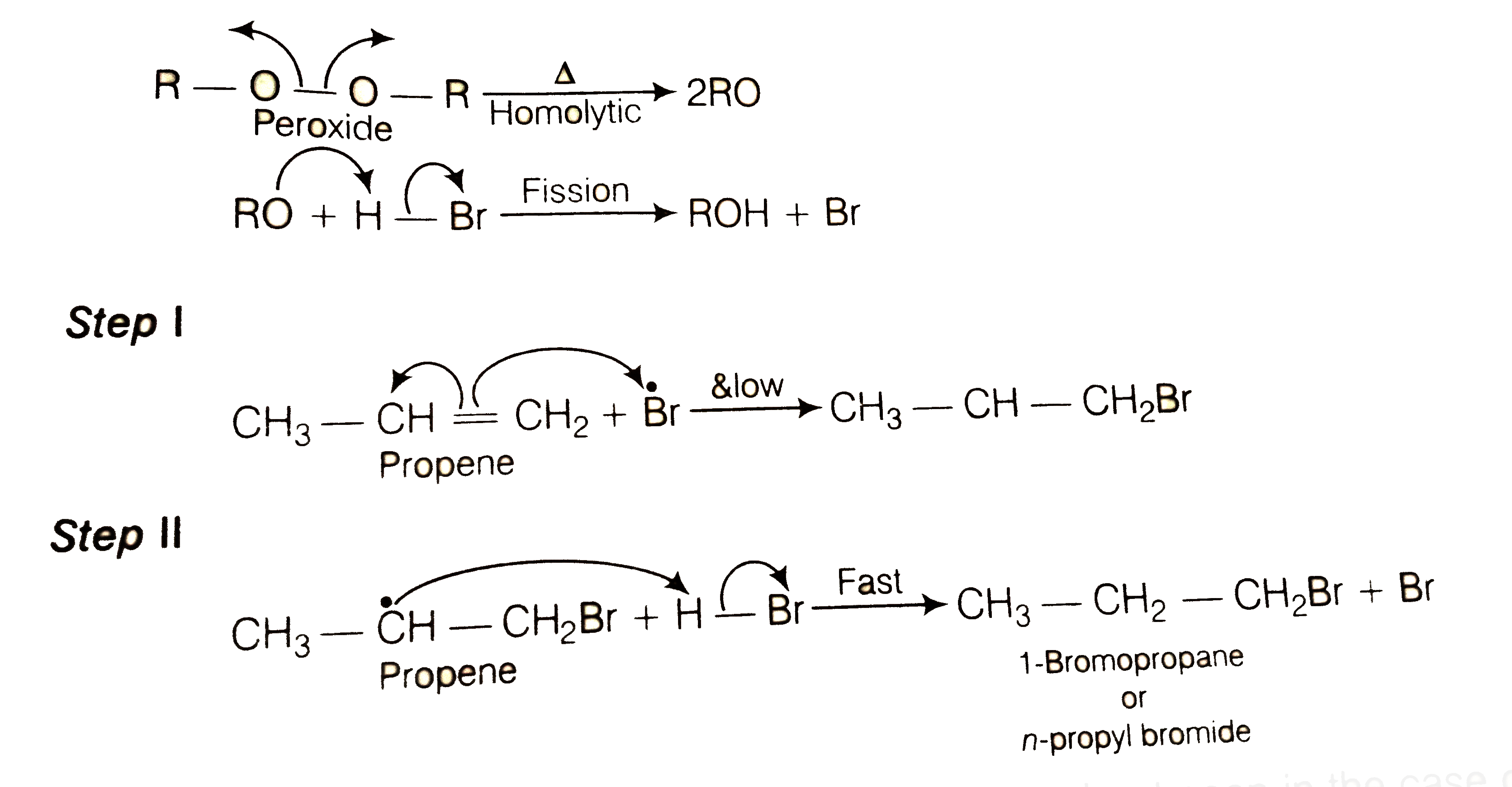In the presence of peroxide addition of HBr to propene takes place according to anti Markownikoff's rule but peroxide effect is not seen in the case of HCl and HI. Explain.
Video Solution
Text Solution
CH3−CH=CH2+HBrpropenePerioxide−−−−→CH3−CH2CH2Brn-propyl bormide
The mechanism of the reaction is

Perioxide effect is effective only in the case of HBr and not seen in the case of HCl and HI. This is due to the following reasons.
(i) H - Cl bond (103 kcal/mol) is stronger than H-Br bond (87 kcal/mol) H-Cl bond is not decomposed by the peroxide free redical whereas the H-I bond is weaker (71 kcal/mol) form iodine free radicals .
(ii) lodine free radical (I∘) formed as H - I bond is weaker bot iodine free radicalts readily combine with each other to form iodine molecules rather attacking the double bond .
|
Similar Questions
Knowledge Check
Assertion: -The addition of HCl to unsymmetrical alkenes in the presence of organic peroxides takes place against Markownikoff's rule.
Reason :-2∘ free radicals are more stable than 1∘ free radicals.AIf both Assertion and Reason are CORRECT and Reason is the CORRECT explanation of the Assertion.BIf both Assertion and Reason are CORRECT but Reason is not the CORRECT explanation of the Assertion.CIf Assertion is CORRECT but Reason is INCORRECT.DIf Assertion is INCORRECT but Reason is CORRECT.The reaction intermediates involved in the addition of HBr to propene in the presence of an organic peroxide are
(a) free radicals
(b)carbocations
(c)carbanions
(d)carbenesAfree radicalsBcarbocationsCcarbanionsDcarbenes
Reaction of HBr with propene in the presence of peroxide gives :-
View SolutionThe intermediate during the addition of HCl to propene in the presence of peroxide is :
View SolutionIn the presence of peroxide, hydrogen chloride and hydrogen iodide do not give anti-Markovnikov's addition to alkenes because:
View SolutionIn the adddition of HBr to propene in the absence of peroxides, the first step involves the addition of-s
View SolutionThe reaction of HBr with 1-propene in the presence of peroxides will produce primarily
View SolutionAddition of HBr to propene yields 2-bromopropane, while in the presence of benzoyl peroxide, the same reaction yields 1-bromopropane. Explain and give mechanism.
View Solution

